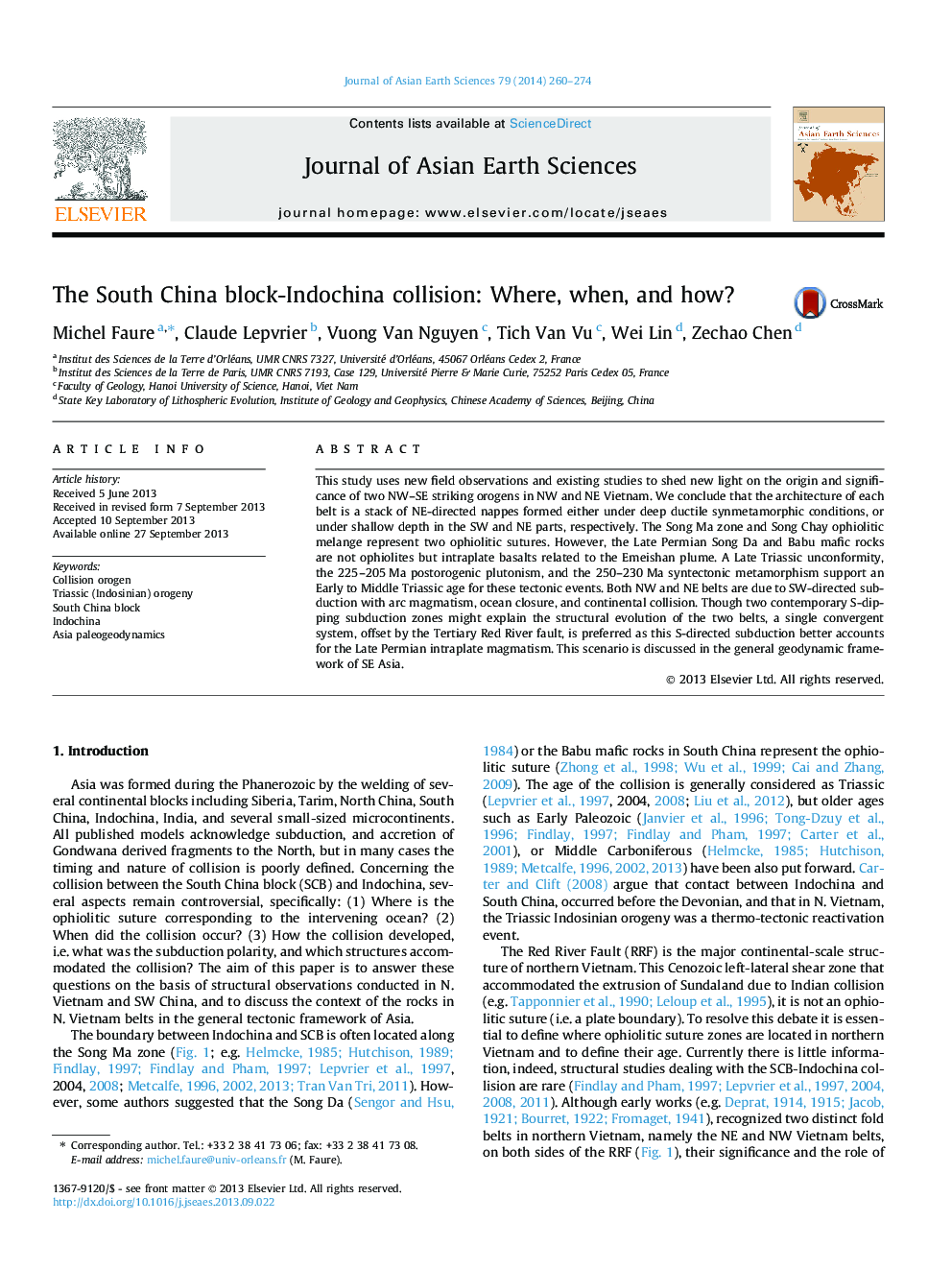| کد مقاله | کد نشریه | سال انتشار | مقاله انگلیسی | نسخه تمام متن |
|---|---|---|---|---|
| 4730906 | 1356785 | 2014 | 15 صفحه PDF | دانلود رایگان |
• In North Vietnam two Triassic collisional orogens result of S-directed subduction.
• Song Ma and Song Chay zones are two ophiolitic sutures.
• The Late Permian Song Da and Babu mafic rocks are linked to the Emeishan plume.
• A single Permian convergent system accounts for the development of these belts.
This study uses new field observations and existing studies to shed new light on the origin and significance of two NW–SE striking orogens in NW and NE Vietnam. We conclude that the architecture of each belt is a stack of NE-directed nappes formed either under deep ductile synmetamorphic conditions, or under shallow depth in the SW and NE parts, respectively. The Song Ma zone and Song Chay ophiolitic melange represent two ophiolitic sutures. However, the Late Permian Song Da and Babu mafic rocks are not ophiolites but intraplate basalts related to the Emeishan plume. A Late Triassic unconformity, the 225–205 Ma postorogenic plutonism, and the 250–230 Ma syntectonic metamorphism support an Early to Middle Triassic age for these tectonic events. Both NW and NE belts are due to SW-directed subduction with arc magmatism, ocean closure, and continental collision. Though two contemporary S-dipping subduction zones might explain the structural evolution of the two belts, a single convergent system, offset by the Tertiary Red River fault, is preferred as this S-directed subduction better accounts for the Late Permian intraplate magmatism. This scenario is discussed in the general geodynamic framework of SE Asia.
Figure optionsDownload as PowerPoint slide
Journal: Journal of Asian Earth Sciences - Volume 79, Part A, 5 January 2014, Pages 260–274
